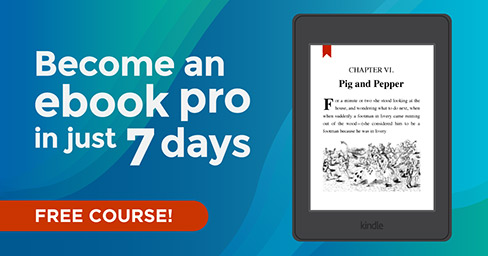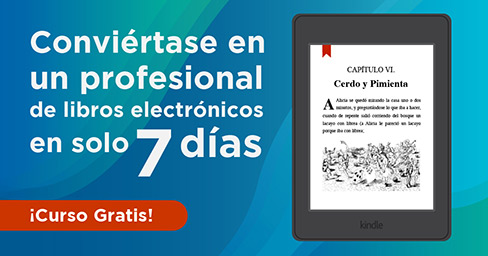The Science Behind Storytelling in Sales
When it comes to any given business that depends on customers buying its products, the first priority is to naturally sell. For that purpose, loads of businesses worldwide choose to use the power of storytelling in sales pitches, websites, brochures, videos, and ads. It is an effective technique in engaging the brain and gently guiding your audience to your intended outcome.

The thing is, there’s a science behind storytelling techniques in sales and today we’ll tell you how and why you need to be using them in your sales campaigns.
What Do We Mean By Storytelling?
Consider the storybooks you’ve been reading all your life. Whatever the theme or genre, they all have certain elements in common. They usually include
- an interesting character,
- a specific structure,
- detailed Character developments,
- challenges to overcome or lessons to be learned, and
- an interesting plot.
When you’re telling a story, you need to help your audience or readers relate to the scene you’re setting. The audience should be able to imagine what you’re describing and easily follow along, regardless of how long or short your story is. You need a beginning, a middle, and a conclusion to round it off. Take this for an example:
“Our services are superior to others of its kind. We offer all our first-time customers 10% off, excellent customer support, and an easy-to-use interface.”
Now, take a look at this one:
“Tim started his business for one reason; to provide exceptional business services. Being an innovator, he worked hard on developing all aspects of his company, from pricing to exceedingly excellent customer support. The end result was a one-of-kind service with an easy-to-use interface that customers continue to benefit from.”
While the first example is okay, it’s flat and triggers no emotion or empathy with the audience. The second, however, takes you on a journey. You discover the purpose of the business, the man who made it happen, and how he did it. It’s all there in a few sentences. Your audience can empathize with Tim, even if they’ve never been in that particular position themselves.
How The Brain Reacts To Stories
The human brain processes information in different ways, according to what you’re experiencing. When you read an advert or watch a sales pitch based on facts alone, the information you absorb gets processed through the logical, rational part of the brain —the left hemisphere. As useful as this part of the brain is, the information processed has no impact on how you feel and could easily be forgotten.
However, listening to a story stimulates the right side of your brain as well. This is the creative side of the brain also responsible for the connections you feel with others. When you hear a story, different parts of your brain are stimulated and work together. Things like logic, senses, and emotions are combined to build a whole picture of what you’re listening to.
This picture triggers emotions, which in turn, can cause the brain to release a hormone called oxytocin. Oxytocin, also known as the “trust hormone”, is what our brains produce when we are around people we love or trust. It tells the listener that everything is fine and essentially builds a bond between the storyteller and the listener.
You are considerably more likely to remember something you felt an emotional connection to, rather than something that had no impact on how you felt. Young children, for example, are often taught potentially difficult subjects, such as mathematics, through stories, games, and play. This is because doing so stimulates the creative side of their brains as well. It results in higher rates of information retention because it’s fun, interesting and stirs positive emotions.
Studies have even shown that stories can synchronize the brain activity between a storyteller and a listener. This means that when someone is telling a meaningful, emotional story that has an impact on them personally, the listener’s brain reacts the same way as the storyteller’s brain. This causes them to both feel and experiences the same series of emotions.
How Do You Write an Effective Story For Sales?
Now we know what storytelling is and what it does to the brain, we can begin incorporating the technique into our sales campaigns.
Create a strategic plan as follows:
1. Consider your key messages as points in the story.
Perhaps you want to communicate your company’s excellent customer service skills, or you are promoting a brand-new product. Move forward with this point in mind.
2. Decide what emotions you intend to trigger.
Emotions make stories more memorable. Equally, emotions in a story can trigger a memory of a time a person felt a certain way. For example, telling a story about a happy wedding day may make your audience remember their own wedding days and how they felt at that time. Thus, in their minds, your story will be connected to that happy day. This will help in retaining the information you’re sharing.
Consider positive emotions:
- Happiness
- Excitement
- Surprise
- Inspiration
- Nostalgia
- Fun
You can also work with triggering negative emotions and turn them into positive ones throughout your story. For example, a pain point or frustration that alleviates and (surprisingly) turns into joy!
3. Create your story’s components.
Create characters and a plot, based around your key messages. Give your characters personalities that your audience can relate to. Then, use your different components to take your audience on a journey that they can easily follow. Include a beginning, middle, and end.
4. Use sensory language to stimulate different parts of the brain.
Consider images, sounds, tastes, smells, and feelings. Set the scene and play with different sensory words. If your character is outside, what surrounds them? Can they hear the birds, smell the grass, feel the breeze?
5. Embellish your work.
Use similes and metaphors to get the imagination going and help your audience make sense of your character’s world.
6. Incorporate your own experiences to personalize your stories.
This will help your audience to not only connect with your characters but also with you as the storyteller.
Combine all of these steps to craft an engaging, compelling, and interesting story that stimulates different areas of the brain and triggers emotions.
How To Use Your Stories
There really is no limit to how and where to publish your stories:
Your Website’s Homepage
Stories work particularly well on a website’s homepage. They encourage visitors to stay on your page longer and peruse other pages on your site. This will effectively lower your bounce rate and improve your SEO. It’s also a fantastic way to give visitors a really clear image of your business and promote a powerful brand style and tone of voice.
You can tell your stories in the form of text or videos. If using text, ensure you keep your story short and to the point as lots of text on a homepage can be intimidating for readers. Break your story up with interesting subtitles and images to keep the reader more engaged throughout.
If you’re using a video to tell your story, ensure that the video loads quickly with the rest of your page content. Slow-loading videos can negatively impact your SEO. Impatient visitors will likely leave without watching it. If your videos are slow to load, you could consider upgrading your hosting plan to one that’s more capable of handling media like videos. For example, VPS hosting is normally faster and more powerful than shared hosting.
Ebooks
Of course, ebooks are the perfect place to showcase your stories. You have more length to work with. The audience expects the content to be more in-depth and considerably longer than a homepage or social media post. They expect to read the ebook and learn something new. Therefore, you can really get creative with your stories without worrying that you’ll have to cut important points out to keep it short.
Market your ebook through your website, ads, and social media channels. By doing this, you not only have the opportunity to place your full story in front of your audience, but it’s also a fantastic opportunity to gather email addresses for your email marketing campaigns.
Consider encouraging discussions about your ebook on social media or your blog. Get people talking about it and create a sense of community surrounding it.
Social Media Posts
Storytelling can be short and sweet too. You don’t need to write something lengthy for it to have an impact on your audience. Create a super-short story the same way as you would create a long one. Remember, it’s simply about guiding your audience from point A to point B.
Social media post stories can be easier to write than others. They are also easier to test for effectiveness. Use social media A/B testing to determine what kind of stories your audience responds to most and keep a record of the type of language, imagery, characters, and plots you use. This way, you may be able to combine all of the highest-performing elements to write an in-depth ebook later on with the same kind of themes.
Lastly, Tell Your Story Like a Pro
There are countless examples of brands using storytelling to successfully market their products and build their brand images. Nike, for example, released a video way back in 1999, telling the story of Michael Jordan’s life. The minute-long video made no mention of the brand, Nike, until the very end when it said their slogan “Just Do It”. This form of advertising stood out at the time as it was contrary to the usual “hard-sell” technique that most businesses opted for. This is just one of Nike’s successful storytelling campaigns that have contributed to their world-renowned popularity.
Conclusion
Telling stories is a skill worth honing, and it’s not exclusive to books. Storytelling and sales can come hand in hand. Think outside the box and tell a real, authentic story that can resonate with your audience. Do that, and you will have the chance to build meaningful relationships with customers, encouraging customer retention and brand loyalty.
Read more here.
6 Tips to Write a Compelling Explainer Video Script








